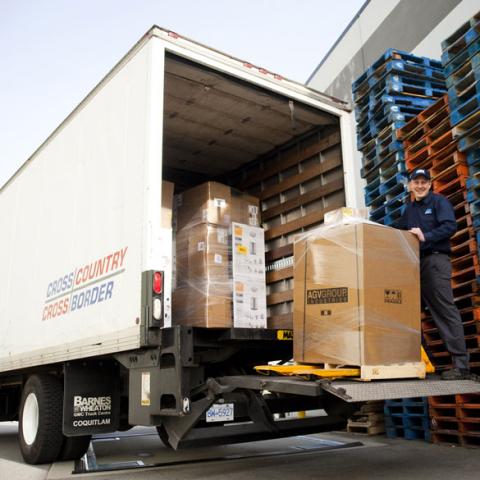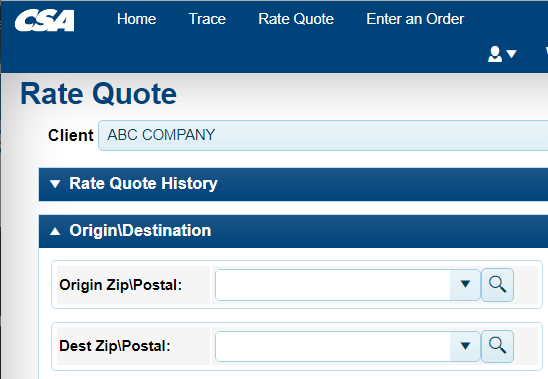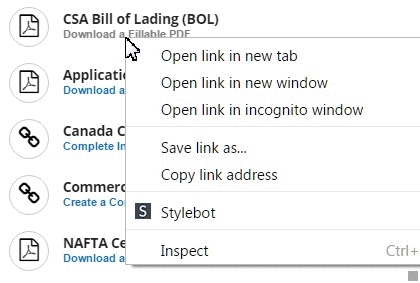Your Guide to Frequently Used Shipping Terms
Understanding shipping terms is crucial to every business that needs to transport goods locally and internationally.
What are Shipping Terms? (Also Known as INCOTERMS)
The terms of shipment in international trade, also known as International Commercial Terms (Incoterms), were established by the International Chamber of Commerce(ICC). Incoterms codified shipping terms and meanings are intended to create a transparent practice of establishing delivery terms, costs, responsibilities, and potential risks common to the freight industry. Moreover, Incoterms identifies who holds ownership of freight and when the transfer of ownership occurs.
This framework allows for seamless transactions between international shippers and consignees as these cargo shipping terms are internationally recognized. All shipping terms laid out by the Incoterms aim to prevent potential misunderstandings between countries.
History of Shipping Terms
The history of freight shipping terms goes back to 1936 when they were initially published. They have been continually updated over the years, with its eighth installment established in 2011 (Incoterms 2010). The amendments were created to keep pace with modern shipping practices.
How Shipping Terms are Used
Shipping delivery terms established under the Incoterms clarified three significant points.
- Who is responsible for transportation services
- Who is responsible for costs and fees
- When and where is ownership of the goods officially transferred?
Establishing these shipping terms helps eliminate confusion and disputes.
Common Shipping Terms
Now that you have a better understanding of international shipping terms let’s look at some standard shipping terms you should know.
3rd Party Logistics Providers (3PL) and Brokers
In shipping terms, a 3rd Party Logistics Provider (3PL) offers its service as a logistics head, managing the details between shippers and carriers. A 3PL can sometimes act as a shipper as well.
Accessorial
An accessorial is any additional services a carrier must provide after arriving at a destination. An example of an accessorial would be unloading freight at the delivery location.
Backhaul
Backhauling is loading up a new cargo on a truck that has made a delivery. The newly loaded freight is then driven back to the trailer's original point of departure.
Bill of Lading (BOL)
A Bill of Lading (BOL) is a document that establishes the shipping terms between a shipper and carrier and acts as an invoice and receipt. It will also detail freight specifics, including tracking numbers and accessorials.
Blind Shipment
A blind shipment is when a third party manages the logistics between a shipper and consignee without the two parties being aware of each other.
Blocking and Bracing Freight
Blocking and bracing freight refer to the packing of a truck hauling multiple orders.
Bulk Freight
Bulk freight is used to describe cargo that is not packaged.
Carrier
Carriers are the companies that physically transport cargo for shippers. Many carriers can operate by land, sea, and air.
Consignee
A consignee is the financially responsible party of a shipment and is usually the recipient.
Container
A container is a large steel storage unit designed to withstand the elements to transport goods.
Embargo
An embargo refers to the act of inhibiting a delivery from being transported or received. Embargos usually are established between two conflicting nations, but other external factors such as severe weather can be the cause.
Flatbed
A flatbed is used to describe a trailer that only has flooring and no walls or roof. When attached to a truck, it’s frequently used to transport bulk cargo and heavy machinery.
Freight Class
A freight class is a scale that describes the difficulty of transporting specific cargo. The classes range from Class 500 down to Class 50. Metrics such as transportability, fragility, weight, stow-ability, liability, and size all factor into a freights classification. Class 500 represents freight with a higher cost of shipping.
Hazmat
Hazmat is an abbreviation for hazardous materials, otherwise known as a material that can be harmful through exposure. To handle Hazmat cargo, the driver is required to be Hazmat Certified.
Interline
Interline is the action of transferring cargo between two or more carriers before it reaches the consignee.
Less than Truckload (LTL)
LTL Freight is a cargo shipment larger than a parcel but not enough to fill a truck to maximum capacity. A carrier will transport multiple LTL handling units (Crates, pallets, skids) on a truck to maximize space and overhead.
Linehaul
Linehaul is the term used to refer to a freight route, usually between distribution centers. It can also describe the distance calculated to determine shipping costs.
NMFTA
National Motor Freight Traffic Association (NMFTA) is the freight industry's leading regulatory body.
Receiver
A receiver is a party tasked with recordkeeping of incoming freight. While the shipper tends to the logistics of sending shipment, a receiver is responsible for accepting the cargo.
Sealed Trailers and Trucks
A sealed freight is not to be touched while in transit. After the cargo has been loaded onto the truck, the doors are sealed with a notice. This seal indicates that the contents shouldn’t be handled until they arrive at their final destination.
Shipper
A shipper is a party responsible for a freight's logistics until it is brought to a receiver. The shipper is tasked with all outbound logistics.
Truck Load (TL)
A Truckload is a designation given to a cargo that requires the full use of a truck, leaving no additional space to store LTL freight.
Let Us Help
If you need help determining the shipping terms of your cargo, contact CSA Transportation today. We’re here to guide you so that your shipping is hassle-free.








